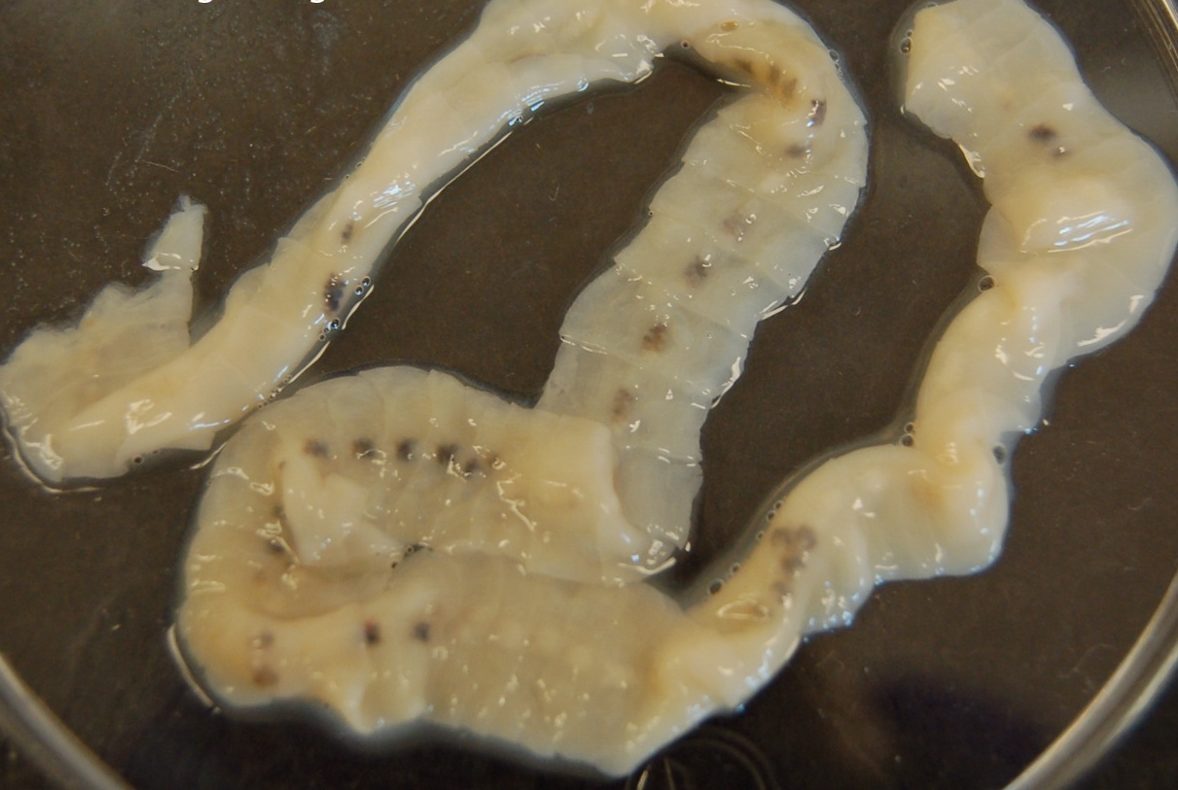
Diphyllobothriasis is defined as infection with the cestode Diphyllobothrium latum (see the image below) or other Diphyllobothrium species (eg, Diphyllobothrium nihonkaiense). It is endemic in areas where humans frequently consume raw or pickled fish.
Signs and symptoms
Most persons with diphyllobothriasis are asymptomatic. In symptomatic persons, the following are the most common symptoms:
Other, less common, symptoms include the following:
Most patients with diphyllobothriasis have no signs of illness . Rare physical findings that may be noted include the following:
In patients who present with obstruction, the following physical findings may be noted:
Diagnosis
Laboratory studies that may be helpful include the following:
In anemia produced by diphyllobothriasis, increased free hydrochloric acid may be present in gastric juice.
Other studies that may be considered are as follows:
Diphyllobothriasis is caused by ingestion of raw or undercooked infected fish and subsequent intestinal infection. The main causative organisms are D latumand D nihonkaiense, but other Diphyllobothrium species have also been reported as infecting agents, albeit less frequently. Examples include the following:
Diphyllobothriasis is a worldwide disease that affects people near fresh water and appropriate intermediate hosts. D latum commonly infects persons residing in Europe, Africa, and the Far East. Areas where consumption of raw or precooked fish is popular tend to have endemicity (eg, northern Europe and Scandinavia). Aside from dietary preferences, night soil (human excrement) fertilization practices and poor sanitation seem to play a role in the increased incidence of diphyllobothriasis in some countries.
In general, diphyllobothriasis carries an excellent prognosis. D latum is not invasive, and mortality due to diphyllobothriasis is rare. Single-dose therapy is usually effective, though some treatment failures have been reported and repeat treatment is occasionally needed.
Occasionally, infestation can lead to severe megaloblastic anemia or intestinal obstruction. Although it is well described, megaloblastic anemia is in fact very unusual. Gastrointestinal (GI) obstruction is also rare but may occur, especially when numerous worms are present and form a substantial bulk in the GI tract.
Because reinfection is possible, patients should be advised to modify their dietary habits so as to minimize the potential for reexposure. Proper food preparation and hygiene should be encouraged, particularly during travel within endemic areas.
It is imperative to educate people about the effective ways of making freshwater fish safe for consumption. Cooking fish to a temperature of 56°C or higher for longer than 5 minutes or freezing fish to −18°C for 24 hours kills the plerocercoid larvae. The larvae can also be killed by pickling fish in brine under very rigorous conditions. The fish must never be sampled before it is properly prepared.